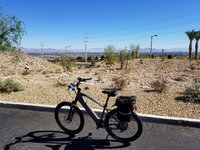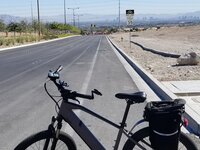' I received my replacement controller due to Error 21 for my 2nd Ed gen LMT’D this week... just installed it in less than 15-20minutes but thought I would share some photos.
One tip: there are 4short screws and 1longer. The longer one is the one which is by itself at the base of the battery bracket. Installing this one first allowed for easy alignment and allowed manipulating the lock cylinder into place before installing other screws.
Replacement controller. Everything is silicon filled except yellow batt connector. For those looking to install lights, the two 2pin connectors grey/black would be used. The connectors are not used in stock config but could easily be used.
.







One tip: there are 4short screws and 1longer. The longer one is the one which is by itself at the base of the battery bracket. Installing this one first allowed for easy alignment and allowed manipulating the lock cylinder into place before installing other screws.
Replacement controller. Everything is silicon filled except yellow batt connector. For those looking to install lights, the two 2pin connectors grey/black would be used. The connectors are not used in stock config but could easily be used.
.
Last edited:


